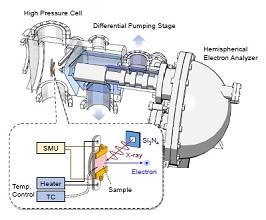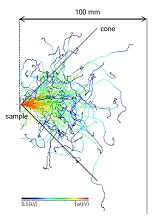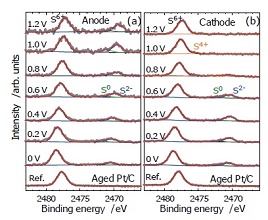Volume 67, Issue 3
Special Feature : Recent Progress of Near Ambient Pressure and Atmospheric X-ray Photoelectron Spectroscopy
Displaying 1-16 of 16 articles from this issue
- |<
- <
- 1
- >
- >|
Preface
-
Article type: Preface
2024 Volume 67 Issue 3 Pages 99
Published: March 10, 2024
Released on J-STAGE: March 10, 2024
Download PDF (360K)
Special Feature : Recent Progress of Near Ambient Pressure and Atmospheric X-ray Photoelectron Spectroscopy
-
Article type: Current Topics
2024 Volume 67 Issue 3 Pages 100-105
Published: March 10, 2024
Released on J-STAGE: March 10, 2024
Download PDF (6026K) -
Article type: Current Topics
2024 Volume 67 Issue 3 Pages 106-111
Published: March 10, 2024
Released on J-STAGE: March 10, 2024
Download PDF (1637K) -
 Article type: Current Topics
Article type: Current Topics
2024 Volume 67 Issue 3 Pages 112-116
Published: March 10, 2024
Released on J-STAGE: March 10, 2024
-
Article type: Current Topics
2024 Volume 67 Issue 3 Pages 117-122
Published: March 10, 2024
Released on J-STAGE: March 10, 2024
Download PDF (3739K) -
Article type: Current Topics
2024 Volume 67 Issue 3 Pages 123-128
Published: March 10, 2024
Released on J-STAGE: March 10, 2024
Download PDF (793K)
Report
Conference Report
-
Article type: Report
2024 Volume 67 Issue 3 Pages 129-130
Published: March 10, 2024
Released on J-STAGE: March 10, 2024
Download PDF (1515K) -
Article type: Report
2024 Volume 67 Issue 3 Pages 131
Published: March 10, 2024
Released on J-STAGE: March 10, 2024
Download PDF (281K)
Science Café
Introducing our New Ph.D.
-
Article type: Science Café
2024 Volume 67 Issue 3 Pages 132
Published: March 10, 2024
Released on J-STAGE: March 10, 2024
Download PDF (566K)
Award winner
-
Article type: Science Café
2024 Volume 67 Issue 3 Pages 133
Published: March 10, 2024
Released on J-STAGE: March 10, 2024
Download PDF (376K) -
Article type: Science Café
2024 Volume 67 Issue 3 Pages 134
Published: March 10, 2024
Released on J-STAGE: March 10, 2024
Download PDF (759K) -
Article type: Science Café
2024 Volume 67 Issue 3 Pages 135
Published: March 10, 2024
Released on J-STAGE: March 10, 2024
Download PDF (1112K)
Introduction of International Affiliate Societies
-
Article type: Science Café
2024 Volume 67 Issue 3 Pages 136-139
Published: March 10, 2024
Released on J-STAGE: March 10, 2024
Download PDF (5460K) -
Article type: Science Café
2024 Volume 67 Issue 3 Pages 140-141
Published: March 10, 2024
Released on J-STAGE: March 10, 2024
Download PDF (320K) -
Article type: Science Café
2024 Volume 67 Issue 3 Pages 142-143
Published: March 10, 2024
Released on J-STAGE: March 10, 2024
Download PDF (401K)
News & Trends
-
Article type: News & Trends
2024 Volume 67 Issue 3 Pages 144
Published: March 10, 2024
Released on J-STAGE: March 10, 2024
Download PDF (325K)
- |<
- <
- 1
- >
- >|





